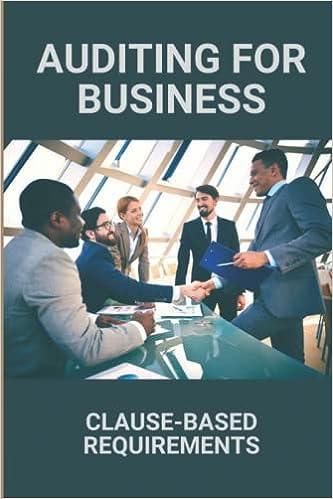Answered step by step
Verified Expert Solution
Question
1 Approved Answer
would appreciate if you could please answer the above questions. Many thanks. please answer the second question at least. 1 of 2 Valuation: Measuring and


would appreciate if you could please answer the above questions. Many thanks.
please answer the second question at least.
1 of 2 Valuation: Measuring and Managing the Value of Companies Reorganizing the Financial Statements Chapter 9 Problems EXHIBIT 1: Ratio Analysis: Consolidated Financial Statements $ millions Company A Company C Company B 100 100 100 Operating profit Interest Earnings before taxes 0 (20) 100 BO Taxes @ 25% Net income 75 60 Balance sheet: Inventory Property and equipment Equity investments Total assets 125 400 125 400 125 400 0 525 50 0 0 Accounts payable Debt Equity Liabilities and equity 50 200 275 525 475 525 575 525 1. Exhibit 1 presents the income statement and balance sheet for Companies A B, and Compute each company's return on assets, return on equity, and return on invested capital Based on the three ratios, which company has the best operating performance? 2. Why does the return on assets differ between Company A and Company B? Why do companies with equity investments tend to have lower return on assets than companies with only core operations? 3. Why does the return on equity differ between Company A and Company C? Is this difference attributable to operating performance? Does return on assets better reflect operating performance than return on equity? If not, which ratio does and why? Exhibit 2 Health Co: Income Statement and Balance Sheet Smillion Prior Current 2003 Income statement Revenues Cost of sales Selling costs Depreciation Operating income Balance sheet Working cash Accounts receivable Inventories Current assets 88 Interest expense Gain on sale Earnings before taxes Property.plant & equipment Prepaid pension assets Total assets Accounts payable Short-term debt Restructuring reserves Current liabilities 8% 490 Taxes Net income R Long-term debt Equity Liabilities and equity $ 4. Exhibit 2 presents the income statement and balance sheet for HealthCo, a $600 million healthcare company. Compute NOPLAT, average invested capital, and ROIC. Assume an operating tax rate of 25 percent and a marginal tax rate of 35 percent. If the weighted average cost of capital is 9 percent, is the company creating value? 5. Using the reorganized financial statements created in Question 4, what is the free cash flow for Health Co in the current year? 6. You decide to look closer at Health Co's tax reconciliation footnote. The table reports $35 million in statutory taxes, a $10 million credit for manufacturing investments, and a onetime tax expense of $5 million related to a past year audit. Reported taxes are therefore $30 million What is Health Co's statutory tax rate, operating tax rate, and effective rate? Why does computing the operating tax rate require judgment? 7. Many companies hold significant amounts of excess cash, cash above the amount required for day-to-day operations. Does including excess cash as part of invested capital distort the ROIC upwards or downwards? Why Step by Step Solution
There are 3 Steps involved in it
Step: 1

Get Instant Access to Expert-Tailored Solutions
See step-by-step solutions with expert insights and AI powered tools for academic success
Step: 2

Step: 3

Ace Your Homework with AI
Get the answers you need in no time with our AI-driven, step-by-step assistance
Get Started


